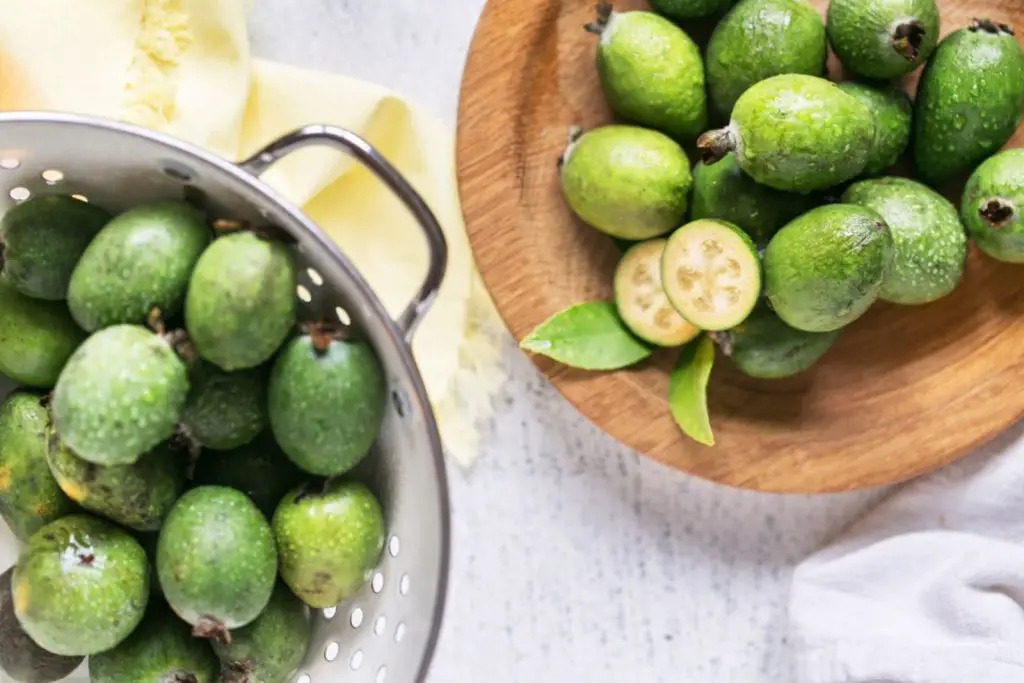
Dark sweet cherries, with their deep red color and luscious flavor, are a beloved summer fruit that delights taste buds with their natural sweetness and juiciness. These succulent cherries are perfect for enjoying fresh, incorporating into desserts, or adding a burst of flavor to savory dishes. However, when faced with a surplus of dark sweet cherries or wanting to preserve their goodness for later use, freezing is an excellent solution. Freezing dark sweet cherries allows you to capture their peak freshness and enjoy them throughout the year, whether for baking, smoothies, or simply enjoying as a refreshing frozen treat. In this guide, we will explore the best practices for freezing dark sweet cherries, including proper preparation, packaging, and storage techniques, so you can savor the flavors of summer even during the colder months. Join us as we delve into the world of freezing dark sweet cherries and discover the convenience of having these delightful fruits at your fingertips, ready to add a touch of sweetness to your culinary creations any time you desire.
Here are the simple steps to freeze dark sweet cherries:
Step 1: Select Fresh and Ripe Dark Sweet Cherries
The first step in freezing dark sweet cherries is to carefully choose the right cherries for the process. It is essential to select cherries that are fresh, ripe, and of high quality. Here’s why this step is crucial:
- Optimal flavor and texture: Fresh and ripe cherries offer the best flavor and texture when frozen. They have reached their peak sweetness and juiciness, which will be preserved during the freezing process. Choosing cherries that are plump and firm ensures that they will retain their desirable texture even after being thawed.
- Better freezing results: Cherries that are bruised, overly soft, or have blemishes may not freeze well or maintain their quality during storage. These imperfections can lead to a loss of texture, flavor, and overall quality. By selecting cherries without these issues, you increase the chances of achieving successful results when freezing and thawing.
- Enhanced storage life: High-quality cherries have a longer shelf life when frozen. By starting with fresh and ripe cherries, you can enjoy their delicious taste even months after the harvest season. Properly frozen cherries can retain their quality for up to a year, allowing you to enjoy them in various recipes throughout the year.
To select the best cherries, look for those that are plump, with smooth and shiny skin. Avoid cherries that have soft spots, blemishes, or signs of mold. Gently squeeze the cherries to ensure they are firm but not overly hard. The color of dark sweet cherries should be deep and vibrant.
Step 2: Wash and Pit the Cherries
Once you have selected fresh and ripe dark sweet cherries, the next step in the freezing process is to wash and pit them. Here’s why this step is important and how to do it:
- Removing dirt and residue: Washing the cherries under cold running water helps remove any dirt, debris, or residue that may be present on the surface. This step is essential to ensure that the cherries are clean before freezing and to maintain their overall quality.
- Hygiene and food safety: Washing the cherries helps eliminate any potential bacteria or contaminants that may be present on the skin. This is particularly important if the cherries have been handled or stored in a way that may have exposed them to external contaminants. Properly washing the cherries reduces the risk of foodborne illnesses and ensures the safety of the frozen cherries.
Here’s how to wash and pit the cherries:
- Place the cherries in a colander or strainer.
- Gently rinse them under cold running water, using your fingers to remove any visible dirt or debris.
- After washing, transfer the cherries to a clean kitchen towel and pat them dry. Make sure to handle them gently to avoid bruising or damaging the cherries.
- Next, remove the pits from the cherries.
There are two common methods to pit cherries:
- Cherry pitter:
A cherry pitter is a specialized tool designed to remove the pits from cherries quickly and easily. Follow the instructions provided with the cherry pitter to remove the pits effectively. This method is efficient and minimizes the risk of damaging the cherries.
- Manual method:
If you don’t have a cherry pitter, you can remove the pits manually. Start by using a small knife to carefully slice each cherry in half, following its natural crease. Once the cherry is halved, you can easily remove the pit by either using the tip of the knife or gently squeezing the cherry half until the pit pops out.
Pitting the cherries is crucial for freezing them because it eliminates any potential bitterness that the pits can impart during the freezing and thawing process. Additionally, pitted cherries have a better texture when thawed and are more versatile for various recipes.
By washing the cherries and removing the pits, you ensure that the cherries are clean, safe to consume, and ready to be frozen while preserving their natural flavor and texture.
Step 3: Arrange the Cherries for Freezing
After washing and pitting the cherries, the next step in the freezing process is to arrange them in a single layer on a baking sheet or tray lined with parchment paper. This step is essential to ensure that the cherries freeze individually and maintain their individual integrity during the freezing process. Here’s why it’s important and how to do it:
- Individual freezing: By arranging the cherries in a single layer, you allow each cherry to freeze individually. This prevents them from sticking together during the freezing process. When cherries freeze in clumps, they can become difficult to separate, and you may end up thawing more cherries than needed. Freezing them individually also facilitates portion control and makes it easier to use the desired amount when needed.
- Prevents clumping and preserves quality: When cherries freeze in clumps, they are more prone to freezer burn, which can affect their texture and taste. By ensuring that the cherries are not touching each other on the baking sheet or tray, you minimize the chances of them sticking together. This helps preserve their quality and makes it easier to handle them when they are frozen.
Here’s how to arrange the cherries for freezing:
- Line a baking sheet or tray with parchment paper. The parchment paper prevents the cherries from sticking to the surface and makes it easier to remove them once frozen.
- Take the washed and pitted cherries and spread them out in a single layer on the prepared baking sheet or tray. Make sure there is space between each cherry, ensuring they are not touching.
- If you have a large quantity of cherries, you may need to use multiple baking sheets or trays to accommodate them all. It’s important to maintain the single layer and ensure space between the cherries on each sheet or tray.
Once the cherries are arranged, place the baking sheet or tray in the freezer. The cherries should be left to freeze for at least two hours or until they become firm and solid. This initial freezing stage, often referred to as pre-freezing or flash-freezing, helps maintain the individual integrity of the cherries and prepares them for proper packaging.
Step 4: Flash-Freeze the Cherries
After arranging the cherries in a single layer on a baking sheet or tray, the next step is to flash-freeze them. Flash-freezing is a rapid freezing process that helps preserve the individual integrity of the cherries and prevents them from sticking together. Here’s why it’s important and how to do it:
- Individual freezing and easy portioning: Flash-freezing the cherries ensures that each cherry freezes separately. This prevents them from clumping together and makes it easier to remove only the desired amount when needed. Flash-frozen cherries maintain their individual form and are less likely to freeze into a solid block, allowing for more convenient portioning.
- Quick preservation of freshness: Flash-freezing is a fast freezing method that helps preserve the freshness and quality of the cherries. By freezing them quickly, you minimize the formation of large ice crystals, which can negatively impact the texture and taste of the cherries. Flash-freezing helps lock in the natural flavors, nutrients, and juiciness of the cherries at their peak.
Here’s how to flash-freeze the cherries:
- Once the cherries are arranged in a single layer on the baking sheet or tray, place the sheet or tray in the freezer.
- Allow the cherries to freeze for at least two hours or until they become firm and solid. The exact freezing time may vary depending on the size and moisture content of the cherries, as well as the temperature of your freezer.
- It’s a good practice to periodically check the cherries during the freezing process. Once they are firm and solid to the touch.
After flash-freezing, the cherries can be transferred to airtight freezer-safe containers or resealable freezer bags for long-term storage. Flash-freezing the cherries individually ensures that they maintain their shape and texture, making it easier to remove only the desired amount of cherries from the freezer as needed.
Step 5: Package and Seal the Cherries
After the cherries have been flash-frozen and are firm and solid, the next step is to package and seal them properly for long-term storage in the freezer. Here’s why this step is important and how to do it:
- Protection against freezer burn: Packaging the cherries in airtight freezer-safe containers or resealable freezer bags helps protect them from freezer burn. Freezer burn occurs when air comes into contact with the cherries and causes dehydration and oxidation, resulting in a loss of flavor, texture, and overall quality. Proper packaging ensures that the cherries stay fresh and maintain their optimal taste.
- Minimize unnecessary thawing and refreezing: Dividing the cherries into small portions or serving sizes before packaging helps facilitate easy access and prevents unnecessary thawing and refreezing. By portioning them, you can remove only the desired amount of cherries without exposing the rest to the fluctuating temperatures of the freezer. This minimizes the risk of quality deterioration due to repeated thawing and refreezing.
Here’s how to package and seal the cherries:
- Transfer the flash-frozen cherries into airtight freezer-safe containers or resealable freezer bags. Choose containers or bags that are specifically designed for freezer storage to ensure they provide a tight seal and protect against air and moisture.
- If using containers, leave some headspace at the top to allow for expansion during freezing. This is particularly important if using rigid containers, as the cherries may expand slightly as they freeze.
- If using resealable freezer bags, gently press out as much air as possible before sealing the bags. You can use the straw method to remove excess air by inserting a straw into the bag, closing it almost completely, and sucking out the air before sealing the bag completely.
- Ensure that the containers or bags are sealed tightly to prevent air from entering. This helps maintain the quality of the cherries and minimizes the risk of freezer burn.
- If desired, label the containers or bags with the contents and date of freezing. This allows for easy identification and helps keep track of the cherries’ freshness. Use a permanent marker or labels that are suitable for freezer use.
By packaging and sealing the cherries in airtight containers or bags, removing excess air, and dividing them into small portions, you protect them from freezer burn and minimize unnecessary thawing and refreezing, ensuring the cherries retain their quality and flavor when you’re ready to use them.
Step 6: Label and Date the Packages
After packaging and sealing the cherries for freezing, it is important to label and date each package. Properly labeling the packages with the contents and freezing date helps with easy identification and ensures that you use the oldest cherries first. Here’s why this step is crucial and how to do it:
- Easy identification: Labeling the packages with the contents allows you to quickly identify the cherries without having to open each container or bag. This is especially helpful if you have multiple types of frozen fruits or if you plan to freeze other items alongside the cherries. Clear labeling saves time and avoids any confusion when retrieving the cherries from the freezer.
- Using oldest cherries first: By including the date of freezing on each package, you can easily keep track of the cherries’ freshness and use them in the order they were frozen. This ensures that the oldest cherries are consumed first, minimizing food waste and maximizing the quality of the cherries you enjoy.
Here’s how to label and date the packages:
- Using a permanent marker or freezer-safe labels, write the contents of the package on each container or bag. For example, you can simply write “Dark Sweet Cherries” or be more specific if you have different varieties.
- Next, write the date of freezing on each package. Include the day, month, and year to provide a clear reference point for the cherries’ age. For example, you can write “Frozen on MM/DD/YYYY” or simply “MM/DD/YYYY” for brevity.
- Make sure the labeling is clear and visible. If using labels, affix them securely to the package. If using a marker, write legibly on a visible area of the container or bag.
By labeling and dating the packages, you create an organized freezer inventory that allows you to easily identify and track the cherries’ freshness. This helps ensure that the cherries are used in a timely manner and maintain their quality for the best possible enjoyment.
Step 7: Store in the Freezer
Once the cherries have been properly packaged, labeled, and dated, the final step is to store them in the freezer. Proper storage ensures that the cherries maintain their quality and remain fresh for an extended period. Here’s why this step is important and how to do it:
- Maintaining quality and freshness: Placing the sealed containers or bags of cherries in the freezer helps preserve their flavor, texture, and nutritional value. The cold temperature of the freezer slows down the deterioration process, allowing the cherries to remain fresh for an extended period.
- Efficient use of space: Positioning the containers or bags in a way that allows for efficient use of space maximizes the storage capacity of the freezer. This ensures that you can store a larger quantity of cherries and optimize the available freezer space for other items.
Here’s how to store the cherries in the freezer:
- Identify the coldest part of your freezer: Different freezers may have variations in temperature, with some areas being colder than others. Identify the coldest part of your freezer, which is typically located towards the back or bottom.
- Place the labeled and sealed containers or bags of cherries in the coldest part of the freezer. Make sure they are positioned in a way that allows for efficient use of space. Stack the containers or bags neatly, taking care not to crush or damage them.
- Avoid frequent temperature fluctuations: To maintain the quality of the cherries, it is important to minimize temperature fluctuations. Keep the freezer door closed as much as possible to prevent warm air from entering, which can cause the cherries to thaw and refreeze.
- Recommended freezer temperature: Set the freezer temperature to 0°F (-18°C) or below. This temperature is ideal for freezing and preserving the quality of the cherries. Check the freezer settings to ensure that it maintains the desired temperature.
By storing the labeled and sealed containers or bags of cherries in the freezer at the appropriate temperature, you ensure that the cherries stay fresh, maintain their quality, and are readily available for future use.
How long can dark sweet cherries last in the freezer?
Dark sweet cherries can last in the freezer for approximately 10 to 12 months. When stored properly in airtight containers or freezer bags at a temperature of 0°F (-18°C) or below, they can maintain their quality, flavor, and texture for this extended period. However, for the best taste and texture, it is recommended to consume them within the first 6 to 8 months of freezing.
Other related questions
How do you defrost dark sweet cherries?
To defrost dark sweet cherries, it is recommended to transfer the desired amount from the freezer to the refrigerator. Allow the cherries to thaw slowly in the refrigerator for several hours or overnight. Avoid thawing at room temperature to minimize the risk of bacterial growth and maintain the best quality of the cherries.
Can you refreeze dark sweet cherries?
It is generally safe to refreeze dark sweet cherries if they have been thawed properly in the refrigerator and have not been left at room temperature for an extended period. However, the quality of the cherries may be affected with each freezing and thawing cycle, leading to potential changes in texture and flavor. It is best to plan portion sizes and thaw only the amount needed to minimize the need for refreezing.
How do I know if the dark sweet cherries have gone bad after being frozen?
After being frozen, dark sweet cherries may show signs of spoilage if they have gone bad. Look for indicators such as a noticeable change in texture, loss of vibrant color, and the presence of mold or off-putting odors. If the cherries appear mushy, discolored, or emit an unpleasant smell, it is best to discard them as they may no longer be safe for consumption.
Are there any special considerations for freezing dark sweet cherries compared to other types of cherries?
When it comes to freezing dark sweet cherries, there are a few special considerations to keep in mind. Dark sweet cherries tend to be softer and juicier than other types, so it’s important to handle them gently to avoid bruising. Additionally, pitting the cherries before freezing is recommended to ensure a smoother texture when thawed. Lastly, dark sweet cherries may have a higher sugar content, so freezing them without adding sugar or syrup is a viable option for preserving their natural sweetness.
Are there any specific uses or recipes that work particularly well with frozen dark sweet cherries?
Frozen dark sweet cherries offer a variety of uses and can be incorporated into numerous delicious recipes. They are commonly used in baked goods like pies, cobblers, and muffins, adding a burst of sweet flavor. Thawed cherries can also be used in smoothies, sauces, or syrups for beverages, desserts, or savory dishes. Additionally, they can be enjoyed as a topping for yogurt, ice cream, or cereal, providing a delightful and refreshing twist.








